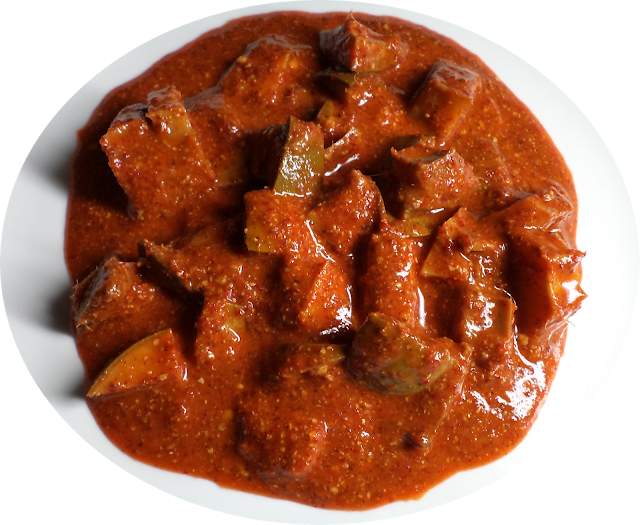CHAKKA PUZHUKKE
(VERSION ‘A’)
A SIMPLE, SUPREMELY DELICIOUS
KERALA JACKFRUIT DISH OF
Introduction:
For
generations, Malayalis have used jackfruit to make their favorite ‘chakka puzhukke’ which is enjoyed either by itself as the main dish or with ‘kanji’
which is rice gruel. The seeds and the fleshy pulp jacket of fully mature,
unripe jackfruit are used to make this wonderful dish. Though there are many
slightly different versions prevalent all over Kerala, I wish to give you two
of my very best recipes.
For both
recipes, I use only ‘varikka chakka’, the best among the two broad categories
of jackfruit in existence. The other category, ‘koozha chakka’ or ‘pazham
chakka’ is avoided because it is full of fibrous strings in slushy flesh when
cooked and gets stuck to one’s throat.
However,
the second category is good for making crispy jackfruit chips, ‘chakka
varattiyathe’ (a sort of jackfruit jam which can be enjoyed as such or used as
a chief ingredient to make other jackfruit dishes), jackfruit wine, salted
jackfruit, etc. So if you can manage to get your hands on the right jackfruit,
be sure to prepare and to enjoy this recipe.
Ingredients
(for 6 to 8 persons):
1) Clean pulp
jacket extracted from a fully mature unripe ‘varikka’ jackfruit – 1350 gm.
2) Cleaned
jackfruit seeds with the thin red inner skin intact – 350 gm.
3) Medium
sized fresh coconut – 1 no.
4) Hot green
chilies – 3 Nos.
5) Cumin seeds
– 1 teaspoon
6) Garlic – a
small pod
7) Tender
curry leaves – 3 sprigs
8) Turmeric
powder – 1 teaspoon
9) Coconut oil
– 1 tablespoon
10) Powdered salt – 2½ teaspoons
To Cook:
Peel and separate the garlic cloves. Cut the jackfruit pulp
jackets roughly to square pieces of around an inch in size (see note no. 1).
Chop the seeds to half inch bits (for tips on cutting up the jackfruit, see my crispy jackfruit chips recipe).
Put the chopped bits and pieces into a 5 litre pressure
cooker and set aside. Break the coconut taking care to collect the coconut
water. Sieve and set aside. Grate the coconut. Put the grated coconut, the
green chilies, the cumin seeds and the garlic cloves into a food processor and
grind to rough paste without adding any water.
Sprinkle the turmeric powder and the powdered salt over the
bits in the pressure cooker. Put in the coconut paste. Mix well with a ladle.
Pour in the coconut water. Now pour in plain water to immerse just more than
half the ingredients. Pluck the curry leaves off their sprigs and tip them in.
Mix nicely again.
Close the lid and set on high heat. As soon as you hear the
first whistle, turn down the heat to minimum. Continue to cook for 2 more
minutes and then switch off the heat. Let the cooker cool naturally. Do not let
out the steam. This will give it enough time to cook the jackfruit to
perfection. Once all the steam has subsided, open the cooker. Dribble the
coconut oil over the chakka puzhukke.
Serve fresh and hot. The aroma of the chakka puzhukke is so
inviting and appetizing that you will find yourself hungry and salivating. So
set out your plates and tuck in.
Enjoy!!!
Notes:
1)
The fruit
pulp and the seeds need to be scrupulously clean. No other parts such as the
nylon-like strands or the plastic-like whitish seed coat should find their way
into the puzhukke. It is worse than
finding bones in fish fillets since these things stick to one’s palate and
throat
2)
This is the
mild version which is much loved. If you need more heat, you can add more green
chilies.
3)
Chakka puzhukke helps greatly to
relieve constipation since the fibre in the jackfruit aids in cleaning out the
intestines.
4)
Chakka puzhukke needs to be eaten
fresh and hot since it loses taste when chilled or reheated. So if you are
cooking for just 2 or 3 persons, take care to reduce the ingredients
proportionately.























